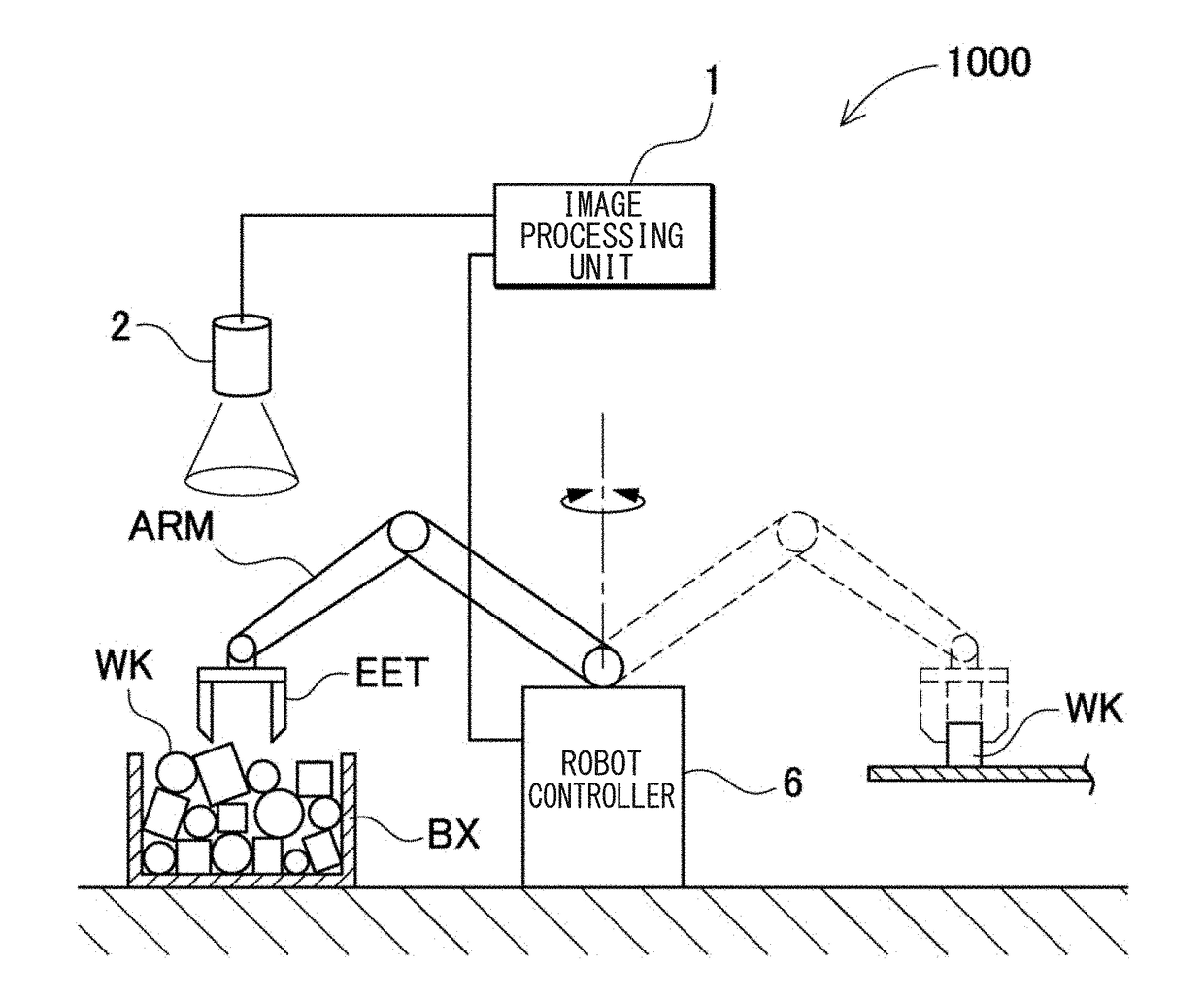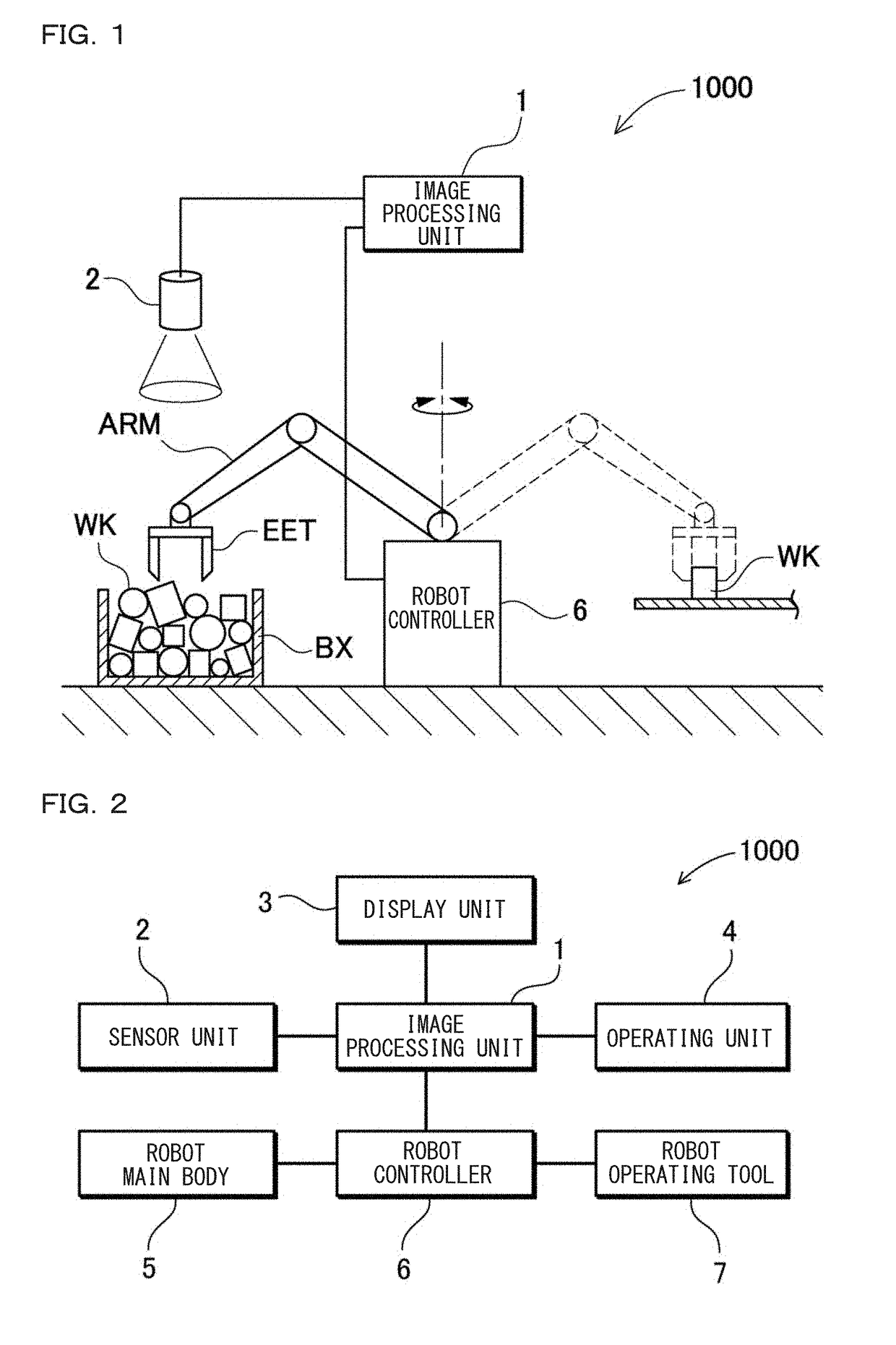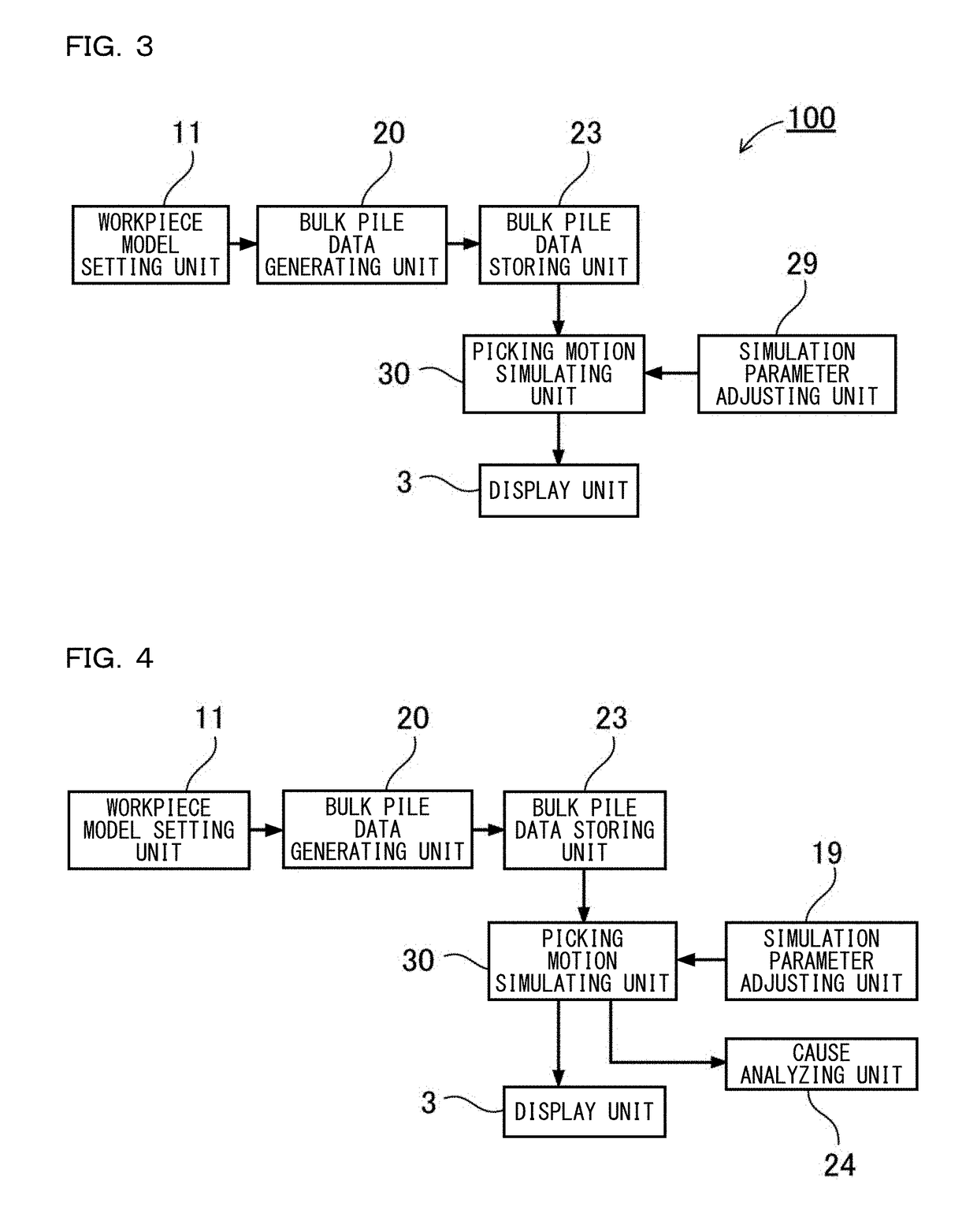Robot Simulation Apparatus And Robot Simulation Method
a robot simulation and robot technology, applied in the field of robot simulation apparatus and robot simulation method, can solve the problems of not being able to measure, so as to increase the simulation accuracy and increase the simulation accuracy
- Summary
- Abstract
- Description
- Claims
- Application Information
AI Technical Summary
Benefits of technology
Problems solved by technology
Method used
Image
Examples
embodiment 1
Robot Simulation Apparatus
[0116]In Embodiment 1, three-dimensional measurement data obtained by excluding a portion, which is not measurable, is generated, based on a posture of a workpiece model in a bulk pile state such that it is possible to execute a simulation in a state approximate to the largest extent to a state of actually performing three-dimensional measurement of the workpiece, and a picking motion simulation is performed, based on the generated three-dimensional measurement data. Specifically, it is not possible to perform the three-dimensional measurement of a portion having a steep angle equal to or larger than a certain angle, based on an angle of a front surface of a workpiece model which is determined from a posture in the bulk pile state, and thus the portion is excluded from bulk pile data that is generated in the picking motion simulation. In this manner, although checking work or setting adjustment, for which time and effort is required for installing a sensor ...
embodiment 1b
[0125]Further, the robot simulation apparatus may further include a cause analyzing unit 24 for analyzing whether a cause of picking-up failure of the workpiece model corresponds to one of a plurality of cause candidates defined in advance in a case where there is a workpiece model that cannot be picked up by the robot in a result of the picking motion simulation executed by the picking motion simulating unit 30. In this manner, the cause of picking-up failure by which it is not possible to perform the picking-up is displayed, and thereby it is easy to prepare a countermeasure for how to correct the cause of failure. In addition, while the picking motion from a bulk pile is simulated, it is possible to easily perform work of adjustment to appropriate setting. Such an example is illustrated in FIG. 4 as Embodiment 1B. The robot simulation apparatus illustrated in the figure includes the workpiece model setting unit 11, the bulk pile data generating unit 20, the bulk pile data storing...
embodiment 2
[0126]In the picking motion simulation, even when an end effector model obtained by simulating an end effector of a robot is determined to be capable of performing the grasping, it is not possible to successfully perform the picking from a bulk pile when an operation is actually performed. This is because there is a case where it is not possible to acquire the three-dimensional shape of the workpiece during the actual operation whereas the determination is performed by using the workpiece model WM having a virtual three-dimensional shape during the picking motion simulation as illustrated in FIG. 79A. For example, in a case where specular reflection is high such as a case of a metal workpiece, there is a portion that is not measurable due to the posture of the workpiece. For example, as illustrated in FIG. 79B, in a result of performing the imaging by the sensor unit from above the work space, it is not possible to measure the three-dimensional shape of a site of the workpiece WK ha...
PUM
 Login to View More
Login to View More Abstract
Description
Claims
Application Information
 Login to View More
Login to View More - R&D
- Intellectual Property
- Life Sciences
- Materials
- Tech Scout
- Unparalleled Data Quality
- Higher Quality Content
- 60% Fewer Hallucinations
Browse by: Latest US Patents, China's latest patents, Technical Efficacy Thesaurus, Application Domain, Technology Topic, Popular Technical Reports.
© 2025 PatSnap. All rights reserved.Legal|Privacy policy|Modern Slavery Act Transparency Statement|Sitemap|About US| Contact US: help@patsnap.com



